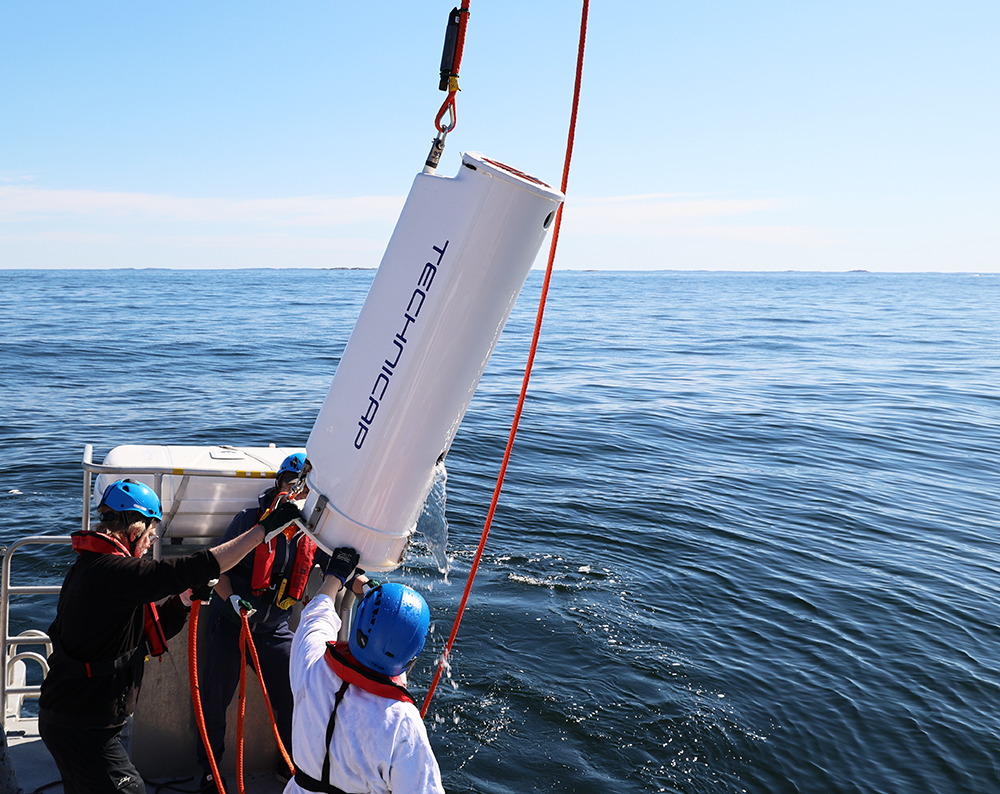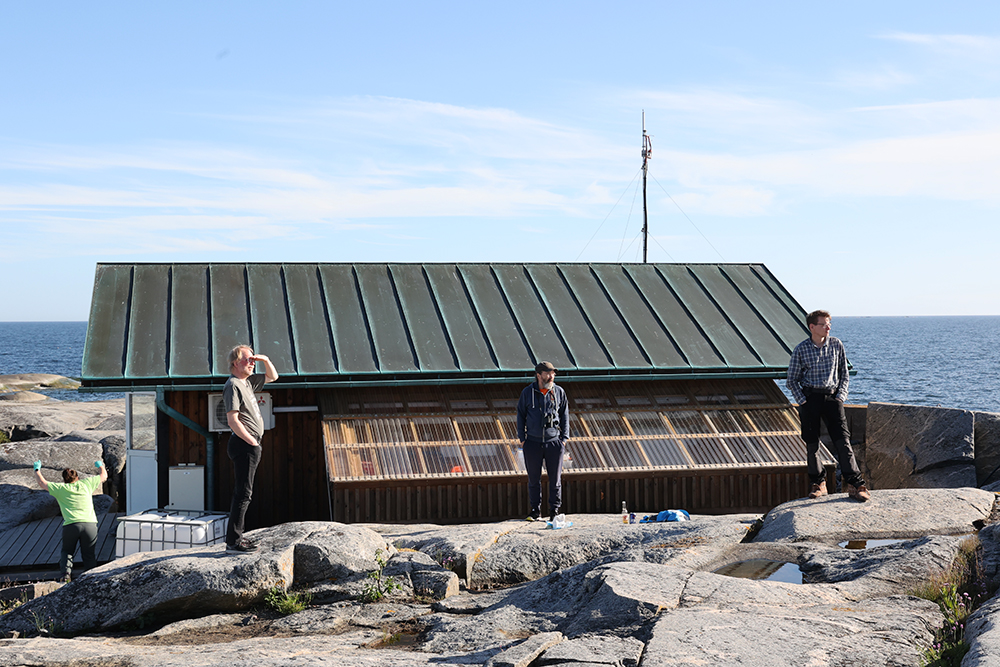Massive blooms of cyanobacteria occur practically every summer in the Baltic Sea. They cover large areas of the sea during July-August and have a substantial influence on marine services, e.g., tourism and recreation, as well as on the ecosystem.
The Gulf of Finland Pilot Supersite promotes transnational observations of these blooms using multiple platforms and technologies. The observations aim at better real-time monitoring, forecasting and modelling of toxic cyanobacterial blooms.
The unmanned Utö atmospheric and marine research station maintained by the Finnish Meteorological Institute (FMI) and the Marine Research Centre of Finnish Environment Institute (SYKE), at the edge of the open Baltic Sea is the cornerstone of the Gulf of Finland Pilot Supersite.
During our recent visit to Utö in June, we prepared our sensors to observe the forthcoming bloom and checked sediment traps, which were deployed close to the Utö field station.

Optical and imaging sensors provide real-time information on the onset and development of the bloom. Automated imaging data is relayed to cloud services, where species identification with AI algorithms is done in near-real-time. The data is used also in the national algae reviews by SYKE.
The sediment traps estimate carbon flux to the seafloor and pCO2 measurements provide data on fluxes between the air and the sea. The data combination allows us to evaluate the effects of cyanobacterial blooms on the carbon balance in the Baltic Sea.
During our visit, dedicated experiments were carried out to better understand the trophic interactions in plankton communities, as well as to determine the pathways of dissolved organic carbon in the system.
Our next visit to Utö is in July. Hopefully, it hits the development of the main cyanobacterial bloom, as our plan is to perform hands-on experiments to support the unattended observations in resolving the mysterious life of these blooms.
About the JERICO-S3 Pilot Supersites
JERICO-S3 will provide regionalised innovative monitoring and science strategies at 4 Pilot Supersites in The Gulf of Finland, the North-western Mediterranean, The North Sea and the English Channel and the Cretan Sea.
The Pilot Supersites (PSSs) will be established and tested during a short implementation period (January 2021 to August 2022) to demonstrate how transnationally and trans-institutionally integrated multidisciplinary and multiplatform observations add value to our ability to answer the multiple key scientific and social challenges that the coastal ocean is facing.

